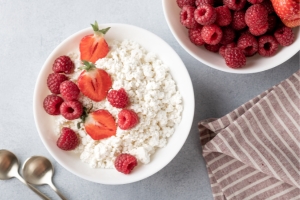Ever wake up feeling like you’ve already run a marathon, even though all you’ve done is sleep? If you’re nodding your head, you might be familiar with the frustration of high morning blood sugar. It’s like your body decides to throw a glucose party overnight, leaving you feeling sluggish and defeated before the day even begins. But don’t worry, you’re not alone, and more importantly, you can take charge! This isn’t about surrendering to a life of finger pricks and frustration; it’s about understanding the sneaky science behind those morning highs and outsmarting them with clever strategies.

Decoding the Dawn Phenomenon: Why Mornings Can Be Tricky
Before we launch into the action plan, let’s get a handle on why this happens. Our bodies are like amazing, intricate machines, constantly working to keep our blood sugar balanced. A key player in this balancing act is the liver, which acts like a glucose vault. Overnight, while we’re catching those Z’s, our liver diligently releases stored glucose into our bloodstream to fuel essential functions. This is perfectly normal, but for people with diabetes, it can lead to a blood sugar surge in the morning.

This surge, often called the “dawn phenomenon,” is fueled by a rush of hormones like cortisol and growth hormone in the wee hours. Think of these hormones as little rebels that temporarily make our cells less responsive to insulin, the hormone that helps our bodies use glucose for energy. It’s like our cells hit the snooze button on glucose uptake, leading to higher blood sugar levels.
Is It Really the Dawn Phenomenon, or a Case of Mistaken Identity?
While the dawn phenomenon is a common culprit for high morning blood sugar, it’s not the only suspect in this mystery. Other factors can contribute, and it’s crucial to pinpoint the real cause to apply the right solutions.
- Insulin Wearing Off: If you use long-acting insulin, its effectiveness might dwindle by morning, causing blood sugar to rise. Imagine it like a battery slowly losing its charge overnight.
- The Somogyi Effect: A Blood Sugar Rollercoaster: This is where things get interesting. Imagine your blood sugar taking a dramatic plunge overnight, like a rollercoaster diving down a steep slope. In response, your body panics and releases a surge of hormones to raise your blood sugar, often overshooting the mark and resulting in high morning levels. This rebound effect is known as the Somogyi effect.
- Lifestyle Factors: Late-night snacking, incorrect insulin doses, or not enough physical activity can also contribute to those morning highs.
Example: Let’s say Sarah, who has type 1 diabetes, experiences high blood sugar every morning. She initially suspects the dawn phenomenon. However, after using a continuous glucose monitor (CGM), she discovers her blood sugar dips very low around 3 a.m. before spiking high in the morning. This pattern suggests the Somogyi effect, indicating a need to adjust her evening insulin dose or have a small bedtime snack.
If you’re consistently battling high morning blood sugar, it’s crucial to team up with your healthcare provider. They can help you crack the code, identify the underlying cause, and recommend personalized adjustments to your medication, diet, or exercise routine.
Taming the Morning Surge: Strategies for Success
Now that we’ve unmasked the potential culprits, let’s equip ourselves with the tools to conquer those morning highs.
1. Mastering the Art of the Evening Meal

What you eat and when you eat it can significantly impact your blood sugar throughout the night and into the morning. Think of your evening meal as setting the stage for a stable blood sugar performance.
- Timing is Everything: Aim to have dinner at least 3-4 hours before bedtime. This gives your body ample time to digest and stabilize your blood sugar before you hit the hay.
- Embrace Complex Carbs: Choose complex carbohydrates like whole grains (brown rice, quinoa), legumes (lentils, beans), and vegetables, which release energy gradually, preventing those dreaded blood sugar spikes.
- Build a Balanced Plate: Ensure your meal includes a good source of protein (fish, chicken, tofu) and healthy fats (avocado, nuts, olive oil). Protein acts as a brake on digestion, while healthy fats promote fullness and contribute to stable blood sugar.
- Say “No” to Sugary Treats: Avoid sugary drinks, desserts, and processed foods in the evening, as these can send your blood sugar on a rollercoaster ride.
2. Medication: Your Partner in Blood Sugar Control

If you’re using diabetes medication, especially insulin, it’s crucial to work closely with your healthcare provider to ensure you’re on the right dosage and schedule.
- Timing Tweaks: If the dawn phenomenon is the culprit, your doctor might suggest adjusting the timing of your long-acting insulin or exploring different types of insulin.
- The Insulin Pump Option: For some, an insulin pump offers more precise control over insulin delivery, helping to prevent those overnight lows and subsequent morning highs.
- Regular Reviews: Make regular check-ups with your doctor a priority to review your medication and make any necessary adjustments based on your blood sugar patterns.
3. Harnessing the Power of Exercise

Regular physical activity is a cornerstone of diabetes management and can significantly impact your blood sugar control.
- Strategic Timing: While exercise is generally beneficial, the timing can influence its effect on morning blood sugar. Evening exercise can help lower blood sugar overnight, but be mindful of exercising too close to bedtime, as it may lead to low blood sugar during the night. Morning exercise can be particularly helpful for those experiencing the dawn phenomenon.
- Find Your Fitness Groove: Choose activities you genuinely enjoy and can easily incorporate into your routine. Whether it’s a brisk walk, a yoga session, or a bike ride, find what works for you and make it a habit.
4. Prioritizing Sleep: Your Secret Weapon

Sleep plays a vital role in regulating hormones and maintaining metabolic balance. When we don’t get enough shut-eye, our bodies produce more stress hormones, which can contribute to insulin resistance and elevated blood sugar.
- Consistency is Key: Establish a regular sleep schedule, going to bed and waking up around the same time each day, even on weekends. This helps regulate your body’s natural sleep-wake cycle.
- Create a Relaxing Ritual: Develop a calming bedtime routine to signal your body that it’s time to wind down. This could include taking a warm bath, reading a book, or listening to soothing music.
- Optimize Your Sleep Sanctuary: Ensure your bedroom is dark, quiet, and cool. Invest in a comfortable mattress and pillows to promote restful sleep.
5. Stress Management: Keeping Your Cool for Better Blood Sugar

Stress can throw a wrench in our blood sugar control. When we’re stressed, our bodies release hormones like cortisol, which can raise blood sugar levels.
- Find Healthy Outlets: Engage in stress-reducing activities like meditation, deep breathing exercises, yoga, or spending time in nature. These activities can help calm your mind and body, reducing stress hormones.
- Prioritize Self-Care: Make time for activities you enjoy and that help you relax. This could include hobbies, spending time with loved ones, or simply taking a break from your daily routine.
- Seek Support: If you’re struggling to manage stress, don’t hesitate to seek support from a therapist or counselor. They can provide tools and strategies to help you navigate stressful situations.
6. Monitoring and Tracking: Your Blood Sugar Detective Work

Keeping track of your blood sugar levels is like being a detective, gathering clues to understand the patterns and make informed decisions about your diabetes management.
- Regular Checks: Check your blood sugar regularly, especially in the morning. This will help you understand how your body responds to different factors like food, exercise, and medication.
- Keep a Log: Record your blood sugar readings, meals, medication, and exercise in a logbook or a diabetes management app. This creates a valuable record for you and your healthcare provider to identify trends and make adjustments as needed.
- Continuous Glucose Monitoring (CGM): Consider using a CGM device, which provides real-time glucose data throughout the day and night. This can alert you to high or low blood sugar levels and provide valuable insights into your blood sugar patterns.
Fine-Tuning Your Diet: A Holistic Approach
While the evening meal is a crucial player, your overall dietary choices throughout the day also contribute to the bigger picture of blood sugar control.
- Consistent Carb Distribution: Spread your carbohydrate intake evenly throughout the day to avoid blood sugar spikes and crashes. This helps your body manage glucose more efficiently.
- Fiber is Your Friend: Include plenty of fiber-rich foods in your diet. Fiber acts like a sponge, slowing down digestion and helping stabilize blood sugar levels. Excellent sources of fiber include fruits, vegetables, whole grains, and legumes.
- Hydration Matters: Staying hydrated is essential for overall health and can also impact blood sugar control. Dehydration can lead to higher blood sugar levels, so make sure to drink plenty of water throughout the day.
The Bedtime Snack Strategy
For some people, a small, healthy bedtime snack can help prevent overnight lows and the subsequent rebound highs of the Somogyi effect. However, choosing the right kind of snack is crucial.
- Balance is Key: Opt for a snack that combines a small amount of complex carbohydrates with protein or healthy fats. This could include a handful of almonds with a small piece of fruit, a few whole-grain crackers with cheese, or a small bowl of Greek yogurt with berries.
- Monitor Your Response: Pay close attention to your blood sugar levels after having a bedtime snack to see how your body responds. If you notice your blood sugar rising significantly, you may need to adjust the type or amount of snack.
The Power of Personalized Care
While these strategies offer a solid foundation for managing morning blood sugar, it’s important to remember that everyone’s body is unique. What works wonders for one person may not be as effective for another. That’s why it’s essential to work closely with your healthcare provider to develop a personalized plan that addresses your specific needs and circumstances.
Factors that can influence your individual plan include:
- Type of Diabetes: Type 1 and type 2 diabetes have different underlying mechanisms, which can influence treatment strategies.
- Medication: Different medications have varying effects on blood sugar, and your healthcare provider can help you determine the best options for your needs.
- Lifestyle: Your daily routine, activity level, and dietary habits all play a role in your blood sugar control.
- Individual Goals: Your personal goals and preferences should be considered when developing a management plan.
By working together with your healthcare provider, you can create a plan that empowers you to take control of your blood sugar and live a healthy, fulfilling life.
Beyond the Numbers: The Ripple Effect on Your Well-being
Managing morning blood sugar isn’t just about achieving those ideal numbers; it’s about enhancing your overall quality of life. Consistently high blood sugar can lead to a range of complications, including an increased risk of cardiovascular disease, nerve damage, kidney disease, and eye problems.
By taking proactive steps to manage your morning blood sugar, you can reduce your risk of these complications and safeguard your long-term health. Moreover, stable blood sugar levels can boost your energy levels, improve your mood, enhance cognitive function, and contribute to better sleep quality.
Taking control of your morning blood sugar is an empowering journey that requires knowledge, commitment, and a personalized approach. By understanding the factors at play and implementing the strategies outlined in this article, you can transform those dreaded mornings into opportunities to embrace a healthier, more vibrant life. Remember, you are not alone in this journey. Your healthcare provider, support groups, and online communities are valuable resources to guide and support you along the way.
References
- The Dawn Phenomenon and Counterregulatory Hormone Abnormalities in Diabetes
- Dawn phenomenon and Somogyi effect: two phenomena of morning hyperglycaemia
- Nocturnal Blood Glucose Control in Type 1 Diabetes
- Influence of bedtime snack composition on overnight glucose control and the dawn phenomenon in type 1 diabetes
- Exercise and Type 2 Diabetes
- Effects of Diet on Type 2 Diabetes Mellitus
- Stress and Diabetes
- Continuous Glucose Monitoring










8 Responses
Okay, so I’ve been battling these crazy morning highs for what feels like forever! I swear, I could eat a salad for dinner and still wake up like I’ve chugged a gallon of maple syrup. I’ve heard of the dawn phenomenon, but the Somogyi effect is new to me. How can I tell if that’s what’s happening to me? Is there a way to catch it in the act? It’s all so confusing! Also does that mean I should eat before bed? Because I thought that was a no-no!
Hi Luciana, I totally get your frustration! It’s like your body’s playing tricks on you, right? The Somogyi effect can be sneaky. The best way to determine if it’s the culprit is to monitor your blood sugar during the night, especially around 2-3 AM. A continuous glucose monitor (CGM) is really helpful for this, as it takes readings constantly. If you see a significant dip in the middle of the night followed by a spike in the morning, that’s a strong indicator of the Somogyi effect.
As for the bedtime snack, it’s not a one-size-fits-all answer. If you’re experiencing the Somogyi effect, a small, balanced snack before bed might actually help prevent those overnight lows that trigger the rebound highs. I talk about this in the “The Bedtime Snack Strategy” section. The key is to choose something with a mix of complex carbs and protein or healthy fats, and then monitor your response to see if it helps. Definitely chat with your doctor about this, though, as they can give you personalized advice based on your specific situation. Hang in there, Luciana! You’re not alone in this.
This article is super informative, but I have a question about exercise. I’m a night owl, and the only time I can really squeeze in a workout is late at night, like after 9 PM. But the article says that might not be the best idea? Does that mean I’m doomed to morning highs if I don’t become a morning person? Also, if you exercise in the morning, won’t you crash right after, since you haven’t eaten?
Hi Antonella , thanks for the question! I understand the struggle of fitting exercise into a busy schedule. While morning exercise can be particularly helpful for managing the dawn phenomenon, it doesn’t mean you’re doomed if you’re a night owl. The key is to be mindful of how your body responds. Late-night exercise could potentially lead to overnight lows in some people, but it might not affect you the same way.
The best approach is to experiment and monitor your blood sugar. Try exercising at night and see how it affects your overnight and morning levels. If you notice lows, you might need to adjust your timing or have a small snack before or after your workout. There is a “Strategic Timing” section of the article about this. And don’t worry, if you choose to exercise in the morning, you shouldn’t crash, since your liver will release stored glucose to prevent that. The important thing is to find an exercise routine that you enjoy and that fits your lifestyle, and then work with your doctor to fine-tune your diabetes management plan accordingly. You’ve got this, Antonella !
Ugh, the dreaded morning high blood sugar! It’s like my body’s throwing a party I never RSVP’d to. I think mine is the dawn phenomenon, but I’m not 100% sure. The article mentions using a CGM, but those things are expensive! Are there any other ways to figure out what’s going on without breaking the bank? Also, giving up evening snacks is going to be TOUGH. Any tips for a snacker like me?
Olivia, I totally get it – it’s like our bodies have a mind of their own sometimes! You’re right, CGMs can be pricey. Before investing, try keeping a detailed log for a couple of weeks. Note down your bedtime blood sugar, what you ate for dinner and when, any middle-of-the-night lows (if you wake up), and your morning reading. This can give you and your doctor some good clues. As for snacks, maybe try a small portion of something high in protein and healthy fats before bed? Think a handful of almonds or some plain Greek yogurt. It might help stabilize things without causing a spike. Good luck with your blood sugar detective work!
This article is super helpful! I’ve been struggling with high morning blood sugar for a while now, and I think lack of sleep might be a big part of it. I’m a total night owl, and I have a hard time winding down before bed. Any suggestions for a good bedtime routine that doesn’t involve counting sheep? Also, does the type of exercise really matter? I hate running, but I love dancing around my living room. Would that count?
Ava, glad you found it helpful! Sleep is SO important for blood sugar control, so you’re spot on. For a relaxing bedtime routine, maybe try a warm bath with Epsom salts, some light stretching, or reading a physical book (not on a screen!). There are also some great meditation apps out there. And YES, dancing totally counts as exercise! The best exercise is the one you enjoy and will actually do. So put on your favorite tunes and dance the night away (but maybe not too close to bedtime!). Sweet dreams and stable blood sugars!